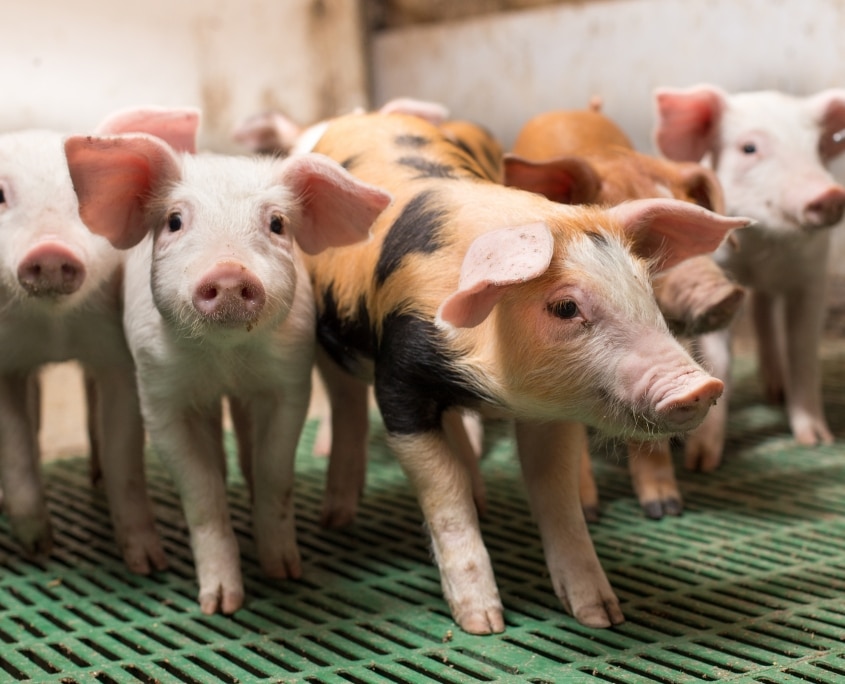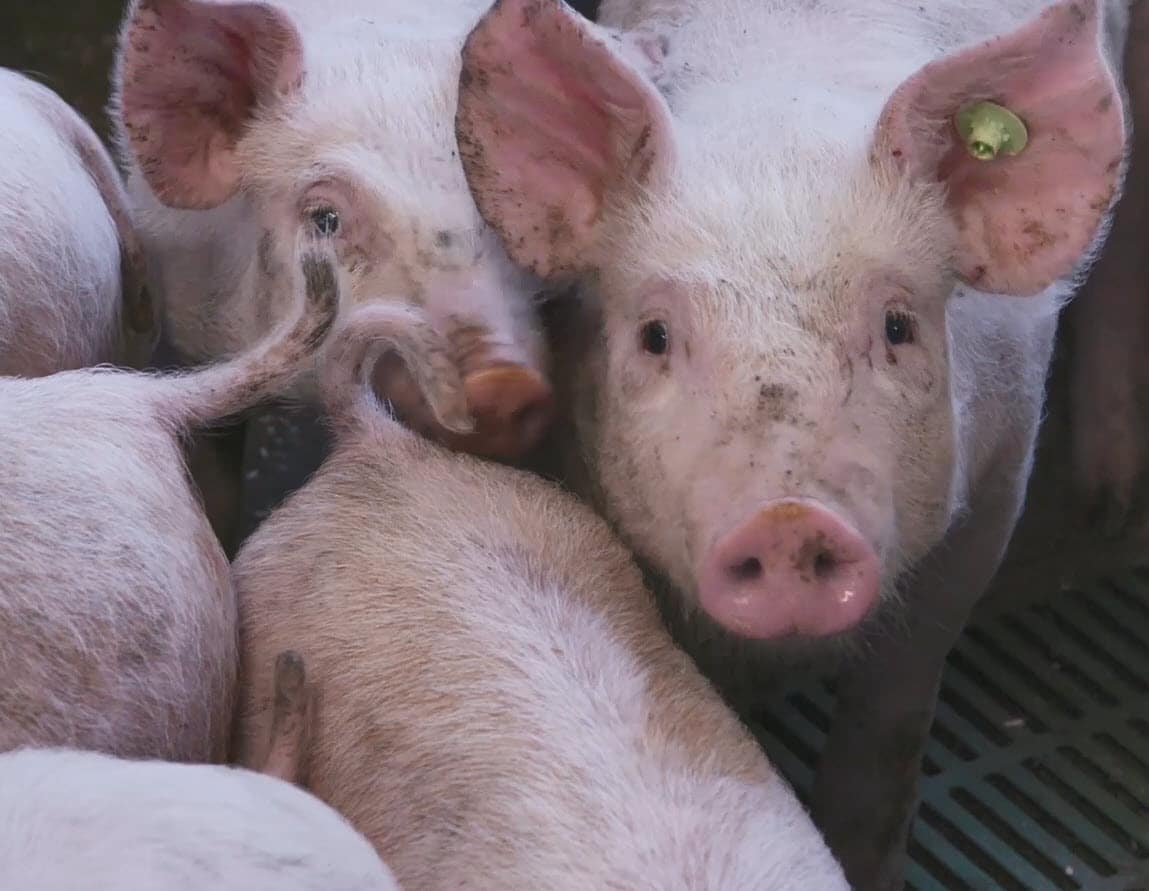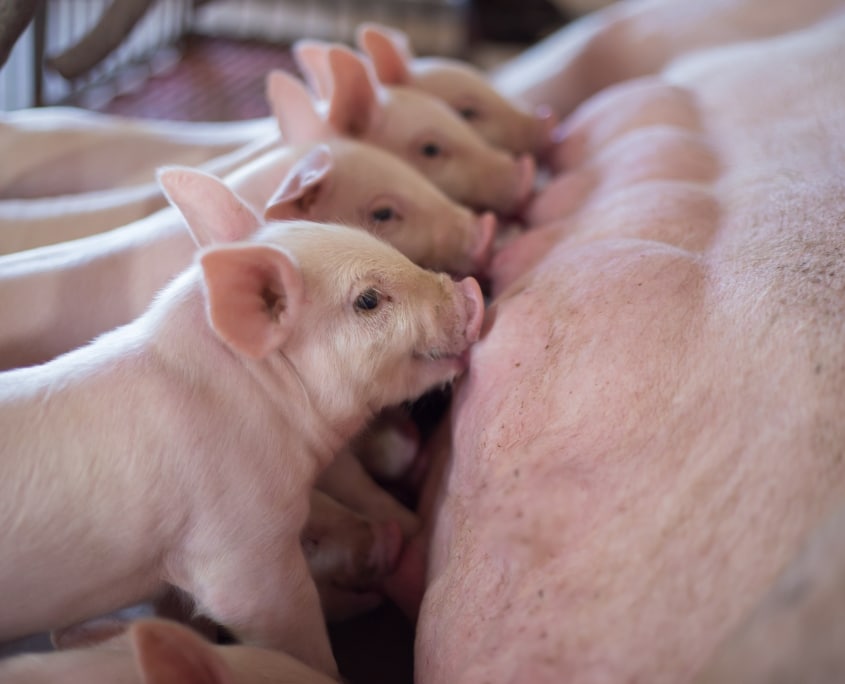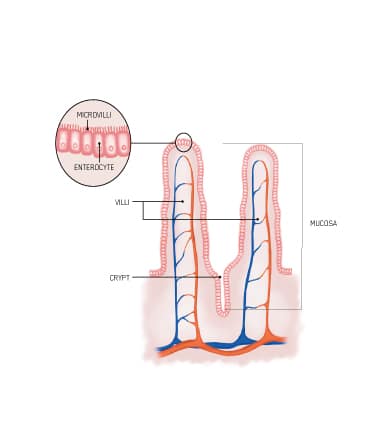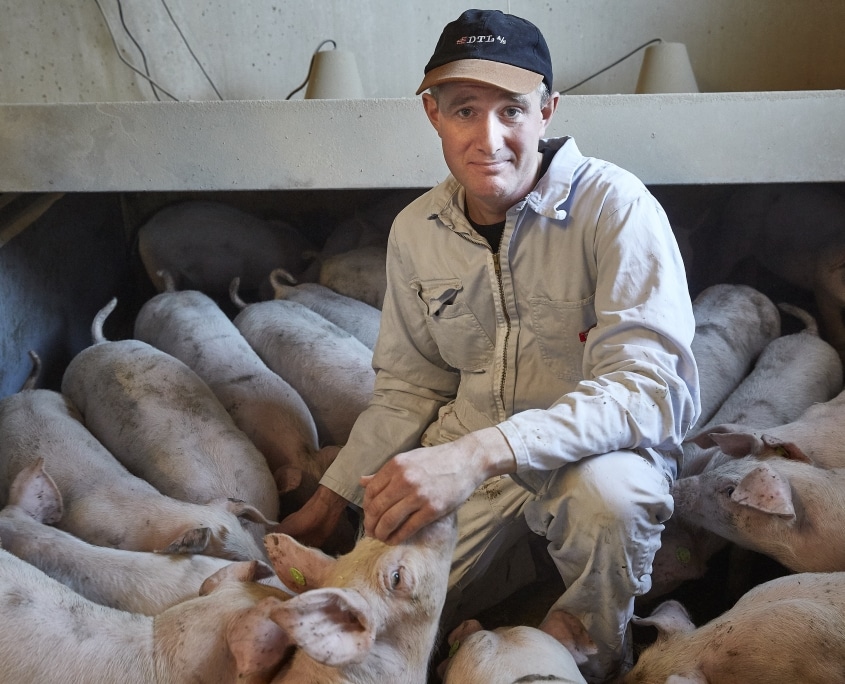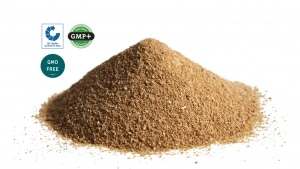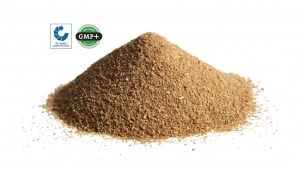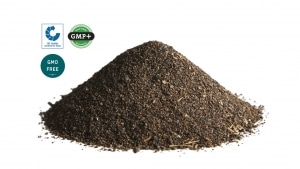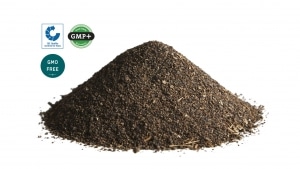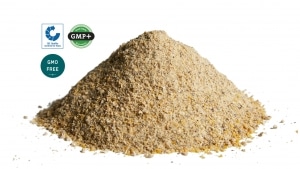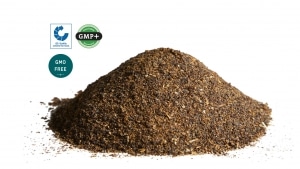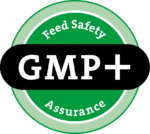Pig health is big business
Greater focus on animal welfare and health, antibiotics and carbon footprint reduction from authorities and consumers forces breeders and producers to rethink their businesses.
In order to maintain production performance high and costs low, whilst reducing the use of antibiotics, the piglet’s health needs extra focus.
Challenges in pig nutrition
More piglets per litter
As litter size continues to grow, more piglets feed on the same amount of sow’s milk. This increases the need for high milk production.
Newborn piglets are more susceptible to pathogenic bacteria as their immune system is not yet fully developed. Through the placenta and the colostrum, antibodies are passed on from the sow to the piglets. When the litter size grows, lack of milk yield and less colostrum per piglet can cause problems, leading to increased mortality. Read more about optimizing sow milk yield here.
Feed benefits
Weaning piglets
Piglets undergo a great deal of stress around weaning. Along with environmental changes, the piglets have to adjust from milk to liquid or dry feed. The transition from milk to solid piglet feed is the most intervening change in the gut microflora.
Immature piglet gut microflora
The gastrointestinal tract of pigs harbours between 500-1000 bacterial species—all playing important roles in shaping the health and disease history of the pig. Early colonization with the right bacterial species will prepare them for weaning and the time after.
Weaning is the most stressful event in the life of pigs. It can disrupt health and performance by increasing diarrhoea leading to a disruption in the gut microflora balance.
Pig feed without medicinal zinc oxide
High doses of zinc oxide 1500-2500 ppm (often referred to as medicinal zinc or therapeutic zink to differentiate it from zinc added in the mineral mix) are used to prevent post-weaning diarrhoea. Medicinal zinc prevents diarrhoea and reduces the number of veterinary interventions with antibiotics. However, medicinal zinc will be banned by the European Union from 2022, to reduce the environmental impact of heavy metals and due to concerns with resistance development.
The mode of action of medicinal zinc is yet unclear. However, it is well documented that up to 90 % of the medicinal zinc given to the piglets is excreted, contaminating the environment. Moreover, recent research in collaboration together with the University of Copenhagen demonstrates that medicinal zinc impairs the development of the immune system, unarming the pigs for the next growth phases. It also shows an increased efficacy when weaning pigs with feed free from medicinal zinc.
Pig diarrhoea
Diarrhoea can be caused by the bacteria Clostridium, a Gram-positive bacterium passed through the faeces from sow to piglet. This type of diarrhoea is often known as birth diarrhoea.
After weaning, when the piglets are no longer directly supported by antibodies from the sows’ milk, they become much more susceptible to E. coli and other enteric bacteria. Especially as their immune system is not fully developed. E. coli causes watery brown or greyish diarrhoea. E. coli is determined through laboratory analysis.
Furthermore, diarrhoea has other causes – Salmonella spp. and Lawsonia spp., are two of them – and non-enteric diarrhoea is another. A non-enteric form of diarrhoea may occur when introducing feed to the piglet. Compared to infectious diarrhoea, the stool will be much firmer and the piglet much more vital during the short period of non-enteric diarrhoea. When you add a fibrous piglet feed, you might come across non-complicated diarrhoea. This is because the fibres work as a feed for the beneficial bacterias in the piglet gut.
Piglet feeds influence on health
Healthy sow – healthy piglet
Ensuring a healthy sow is the first and very important step striving for better piglet production results. A healthy sow has a diverse and balanced gut flora and a fully functional immune system. Both can be influenced through feeding. The sow microbiome is passed on to the piglet via the placenta, at birth, lactation and in contact with the sow.
Modulating the piglet microbiome
The piglet microbiome is also affected by feed. The microbiome consists of thousands of bacterial species. Some bacterias are pathogenic, some beneficial and some are in between. You can balance and diversify the gut microbiome with a feed containing prebiotic fibers, probiotics, and bioactive metabolites (such as organic acids, flavonoids, vitamins and antioxidants). Supplementing a functional feed makes it possible to promote beneficial bacteria while repressing pathogenic bacteria.
Gut development before and after weaning
A thick gut lining works as armour and prevents bacteria from entering the bloodstream. Therefore, developing resilient piglets alongside developing a functional immune system associated with a thick gut lining is essential. A feed can support the development of a fully functional immune system during this transition period. Piglets need to develop their gut ability to utilize the feed optimally when transitioning from milk to solid feed. Complementary functional feed supports the development of a well-equipped gut with long villi and crypts packed closely together.
From suckling piglet to weaned piglet
A smooth transition from milk to piglet feed involves creep feeding in the farrowing stable, starting at least 14 days before weaning. This prepares the piglets gut for the transition to other feed than milk, while still receiving antibodies through the milk.
Reducing bacteria pressure
To keep the contamination in the farm at a minimum, pathogenic bacteria, fungi and parasites need to be minimized in the sows’ faeces. By repressing enteric pathogens and other parasites, less contamination through faeces occur. In order to have the maximum effect in the farrowing stalls, the sow should be fed with antibacterial feed as well.
HOW EP100i works on a commercial farm
PROTEINS
For more information about our fermented proteins
ABOUT EUROPEAN PROTEIN
European Protein is a Danish family-owned protein producer. We work to promote health and productivity for animals through functional and sustainable plant proteins. The company was founded in 2011 and has protein factories in Denmark, Ukraine and the US.
HEAD QUARTER
European Protein A/S
Vorbassevej 12, 6622 Bække, Denmark
+45 75 38 80 40, [email protected]
VAT No. 33643675
FACTORIES
Denmark
Mangehøje 4, 7300 Jelling, Denmark
+45 75 38 80 40, [email protected]
Ukraine
222-a Vokzalna Street, Rokytne 09600, Kyiv Region, Ukraine
+38 044 390 40 54, [email protected]
USA
1201 N Ellis Rd #7055, Sioux Falls, SD 57107, USA
+1 605-338-9775, [email protected]

